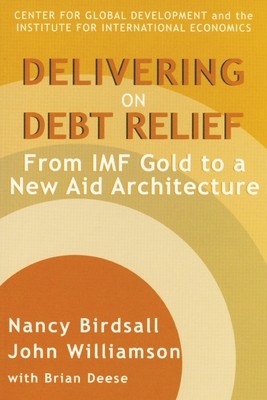
- We will send in 10–14 business days.
- Author: Nancy Birdsall
- Publisher: Peterson Institute for International Economics
- ISBN-10: 0881323314
- ISBN-13: 9780881323313
- Format: 15.8 x 23.3 x 1 cm, minkšti viršeliai
- Language: English
- SAVE -10% with code: EXTRA
Reviews
Description
This study brings readers up to date on the complicated and controversial subject of debt relief for the poorest countries of the world. What has actually been achieved? Has debt relief provided truly additional resources to fight poverty? How will the design and timing of the "enhanced Heavily Indebted Poor Country (HIPC) initiative" affect the development prospects of the world's poorest countries and their people? The study then moves on to address several broader policy questions: Is debt relief a step toward more efficient and equitable government spending, building better institutions, and attracting productive private investment in the poorest countries? Who pays for debt relief? Is there a case for further relief? Most important, how can the case for debt relief be sustained in a broader effort to combat poverty in the poorest countries?
EXTRA 10 % discount with code: EXTRA
The promotion ends in 21d.03:39:34
The discount code is valid when purchasing from 10 €. Discounts do not stack.
- Author: Nancy Birdsall
- Publisher: Peterson Institute for International Economics
- ISBN-10: 0881323314
- ISBN-13: 9780881323313
- Format: 15.8 x 23.3 x 1 cm, minkšti viršeliai
- Language: English English
This study brings readers up to date on the complicated and controversial subject of debt relief for the poorest countries of the world. What has actually been achieved? Has debt relief provided truly additional resources to fight poverty? How will the design and timing of the "enhanced Heavily Indebted Poor Country (HIPC) initiative" affect the development prospects of the world's poorest countries and their people? The study then moves on to address several broader policy questions: Is debt relief a step toward more efficient and equitable government spending, building better institutions, and attracting productive private investment in the poorest countries? Who pays for debt relief? Is there a case for further relief? Most important, how can the case for debt relief be sustained in a broader effort to combat poverty in the poorest countries?


Reviews